As a photographer who travels six months out of the year, my expedition to Mongolia was far from a tedious business trip. The country’s unique cultures and unspoiled landscapes make it a destination unlike any other. Known as the “end of the earth,” Mongolia is the world’s most sparsely populated country with only two people per square kilometer (six per square mile). In contrast, Macau boasts a population density of almost 22,000 people per square kilometer (58,000 per square mile). Additionally, Mongolia is the second largest landlocked country in the world after Kazakhstan, with the Pacific’s Yellow Sea located 700 kilometers (435 miles) to the east, being the closest ocean.
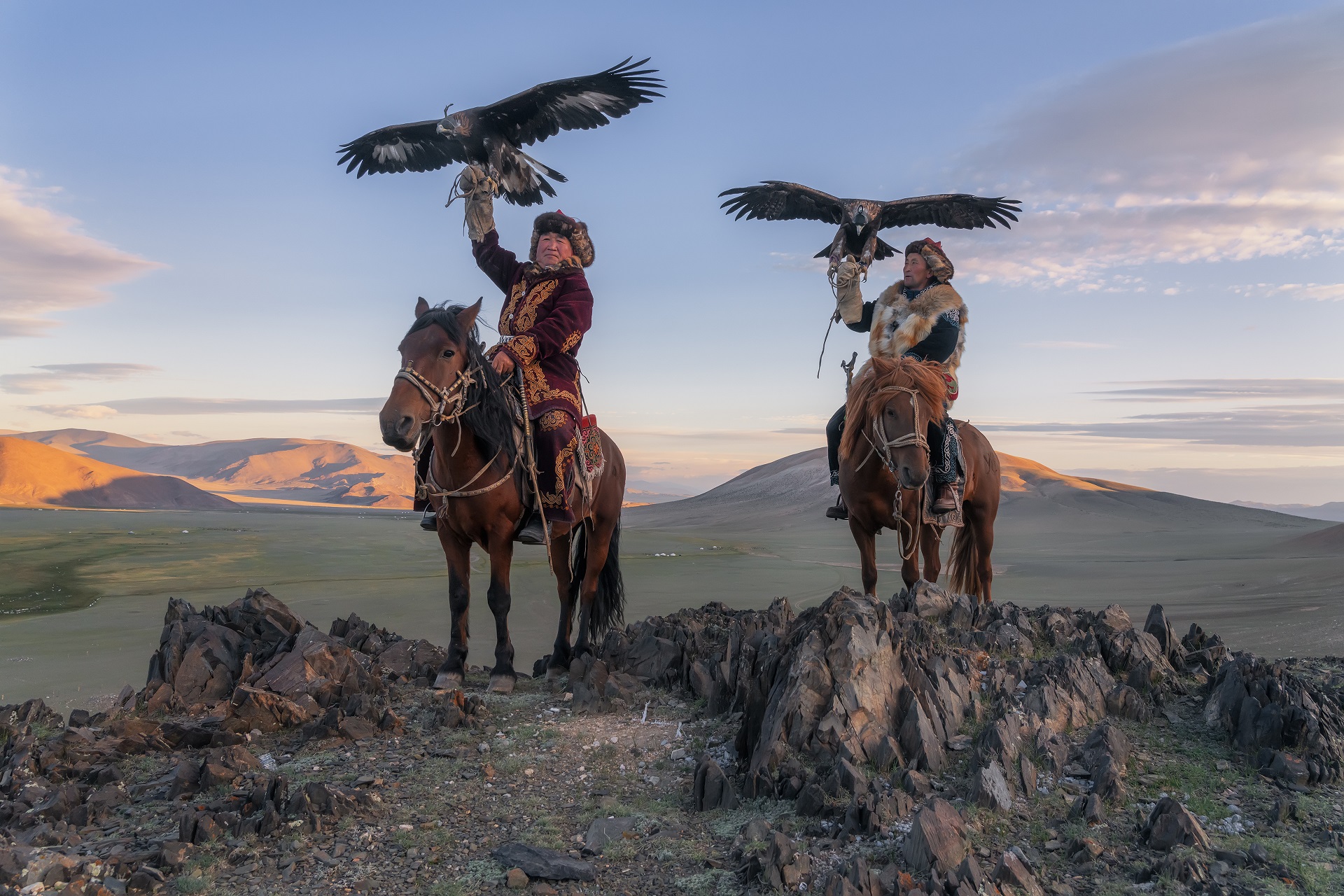
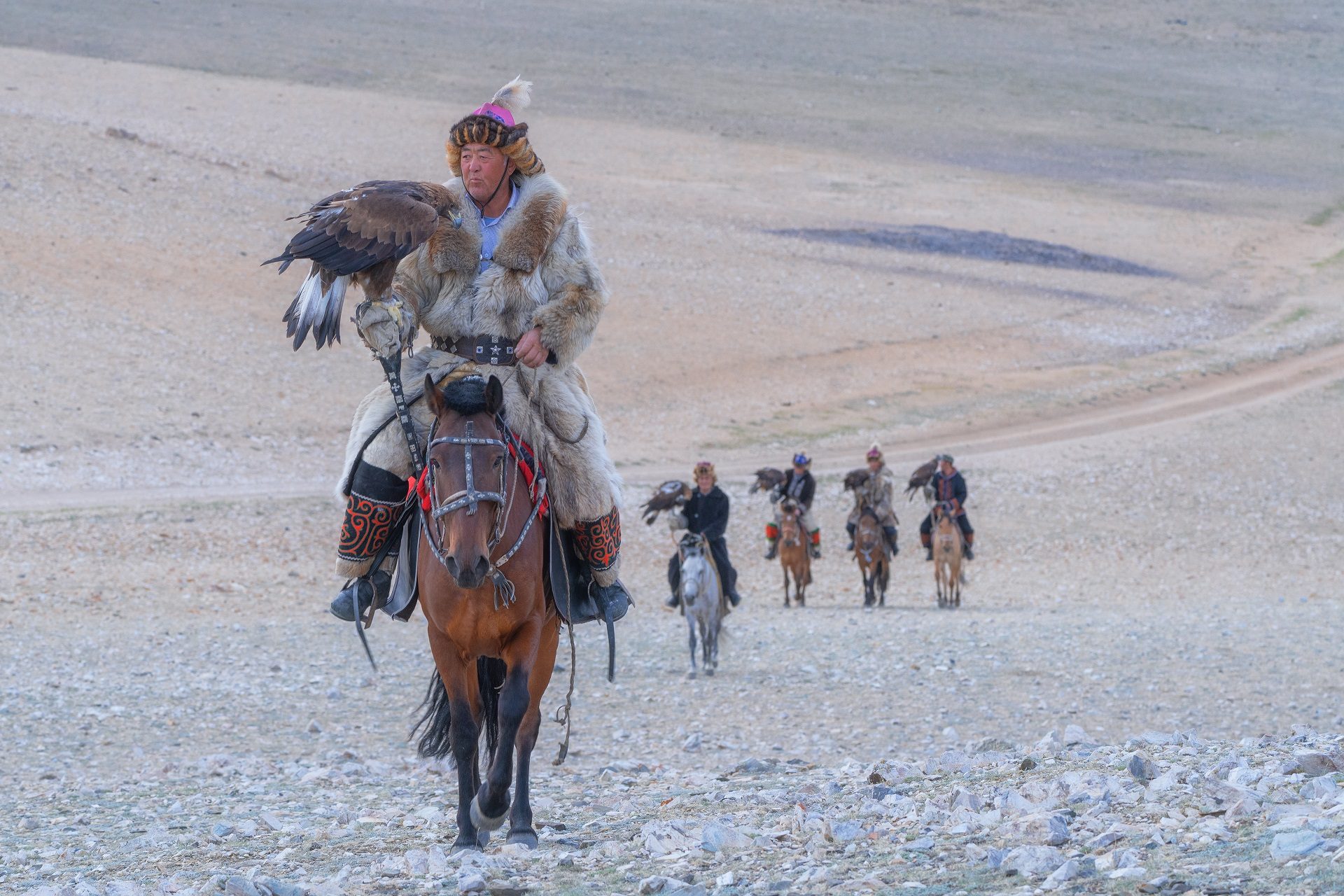
In June and August of 2022, I visited Bayan-Olgii in Western Mongolia for a scouting trip and photo workshop, respectively. During our stay, we were accommodated in traditional Kazakh Ger camps. Our host, Mr. Shaimurat Askhabil, is a 58-year-old Kazakh eagle hunter who lives a nomadic lifestyle in Altantsugts district, Bayan-Ulgii province, in Western Mongolia. Shaimurat owns around 100 sheep, 100 goats, 30 horses, and six cows. He informed us that a sheep or a goat can be sold around US$100, while a cow can be sold for around US$400. Shaimurat uses his horses for herding, as well as for their milk and meat.
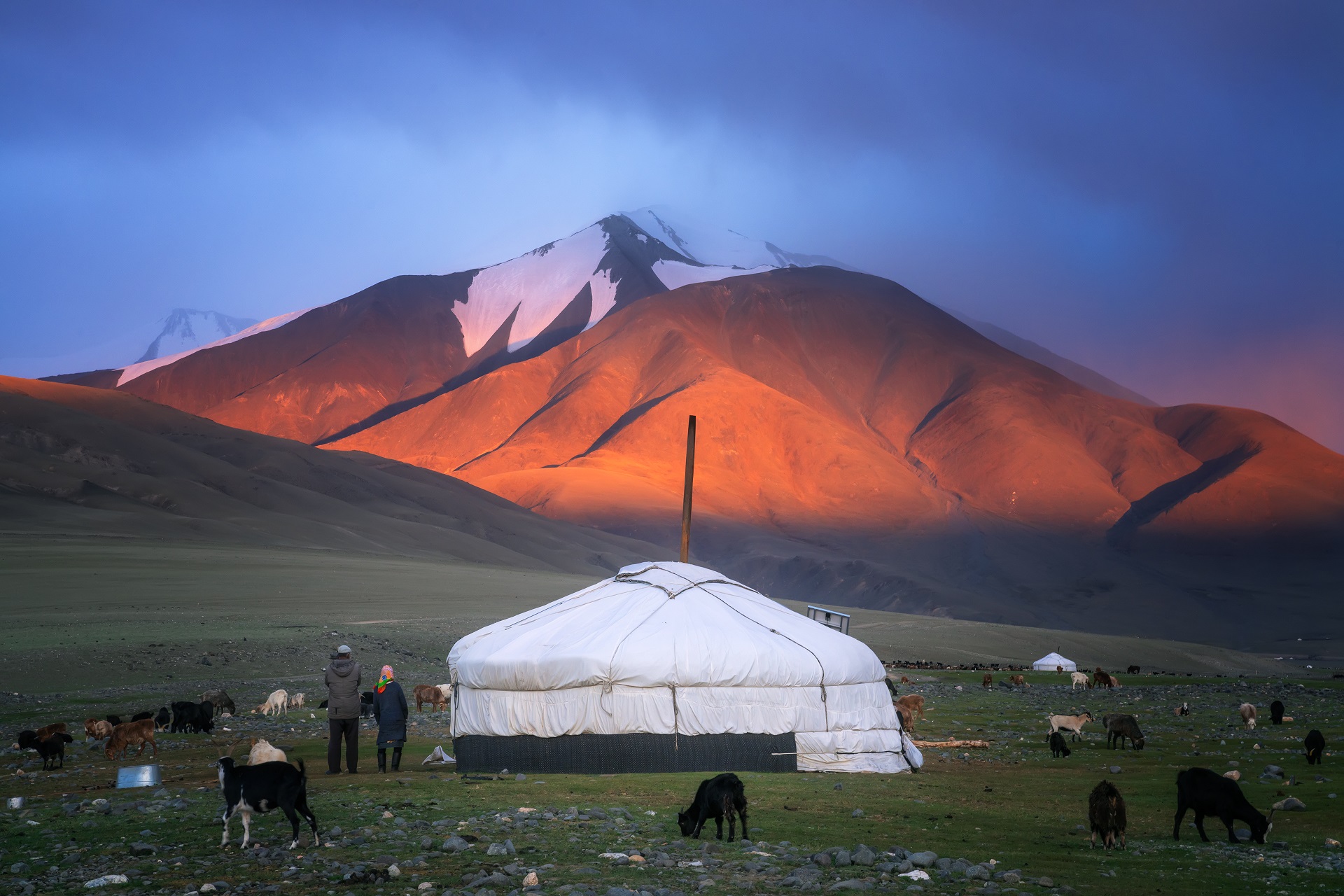

At Shaimurat’s Ger camps, guests are treated to a stunning mountain view without any additional cost. The majestic Tsambagarav Mountain, a part of the Altai Mountains range, is located to the east. This mountain has two peaks, with “Tsast Uul” (the background mountain in the upper left image) being the highest at 4,193 meters (13,757 feet) and the other peak also sharing the name “Tsambagarav.” Notably, Tsast Uul is the second highest peak in Mongolia.
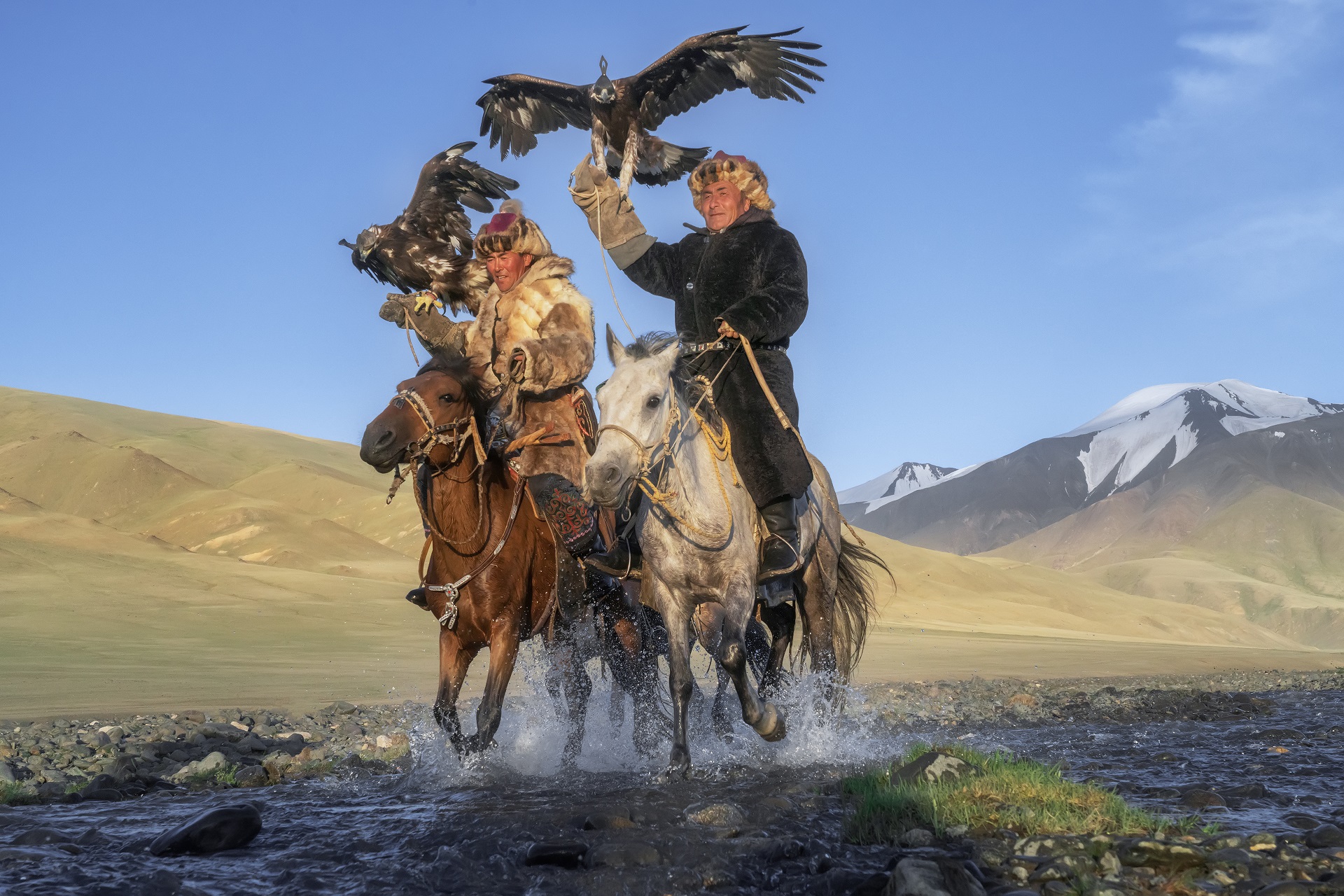
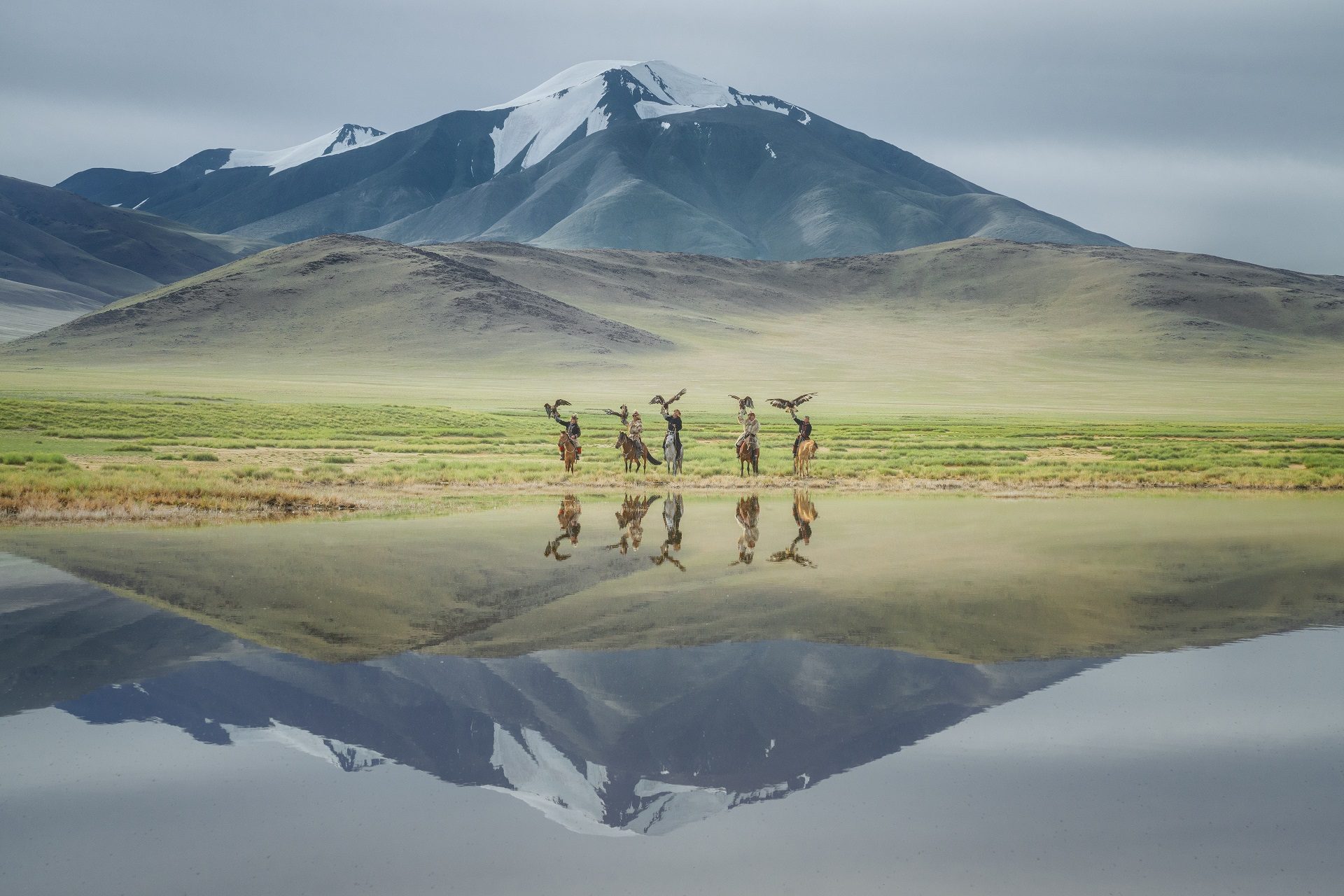
The Kazakhs have been a semi-nomadic people living around the Altai Mountains in Bayan-Ölgii, Mongolia, since the 19th century. Bayan-Ölgii translates to “Rich Cradle” in Mongolian, and it is Mongolia’s westernmost province, with a predominantly Kazakh-Muslim population. The Kazakh population in Mongolia numbers around 87,000, representing approximately 4% of the total Mongolian population. In terms of both language and religion, the Mongolian Kazakhs are culturally and ethnically distinct from other Mongolians. They are Sunni Muslims, with Islam introduced to the Kazakhs in the 8th century. Kazakh is a Turkic language and is the primary language spoken in Bayan-Ölgii. Prior to 1930, the Kazakhs were free to move between Kazakhstan, Mongolia, and the Xinjiang province in China. However, after the establishment of the Mongolian People’s Republic in 1924, many Mongolian Kazakhs began to settle in the highlands of Western Mongolia.
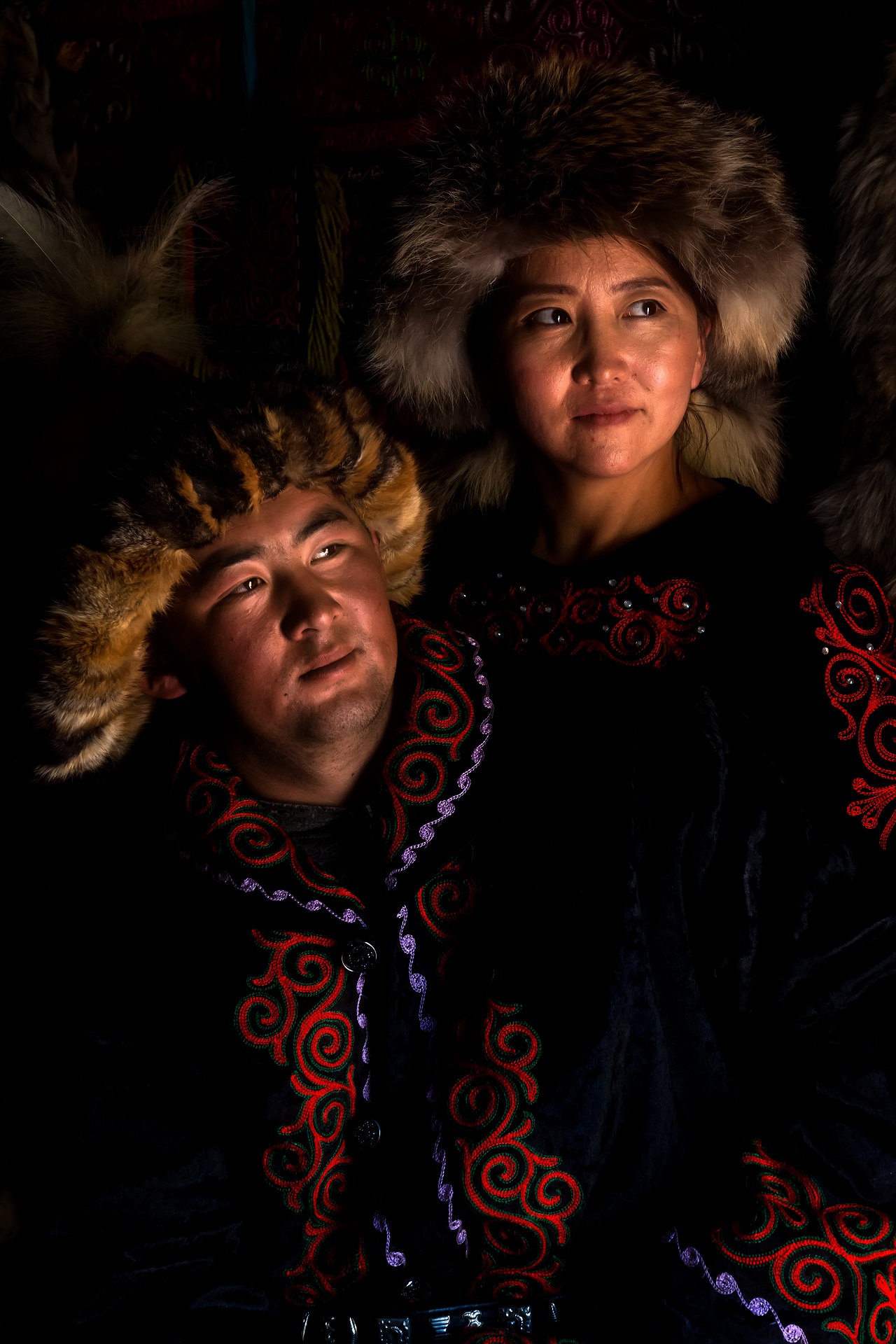
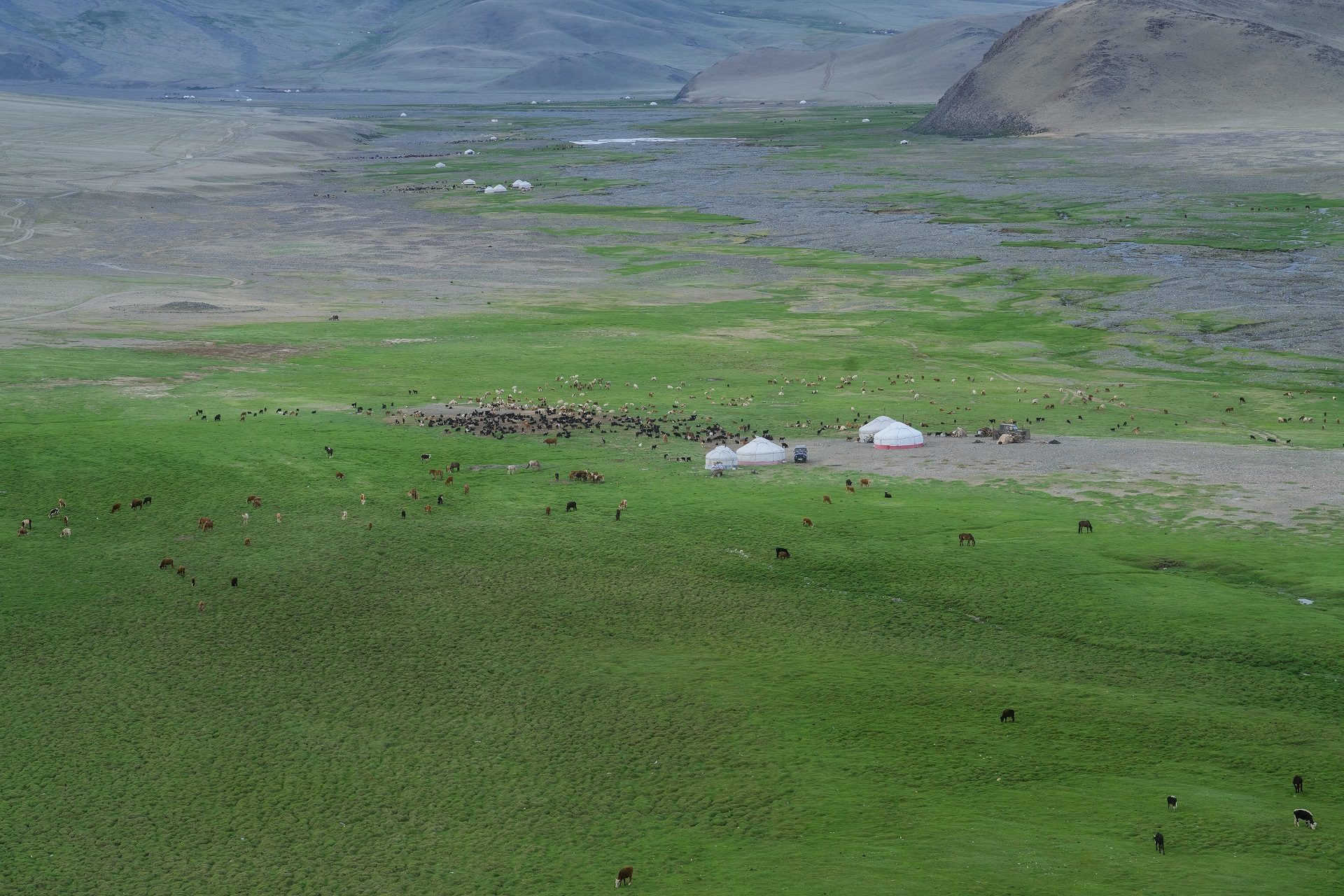
During winter, the Kazakhs reside in small wooden and mud houses to shelter themselves from the long and harsh Mongolian winter, with temperatures ranging from -20°C to -45°C. In contrast, during summer, they live in traditional Gers or yurts, which are portable round tents that they move several times a year along with their herds. The Kazakhs are highly reliant on their domestic animals for their livelihood. According to Shaimurat, setting up or taking down the Ger camp requires the effort of four to five people and can be completed in about an hour. The wooden frame can last for 20-30 years, while the outer cover needs to be changed every two years.


Today, there are an estimated of 250 Kazakh eagle hunters in Mongolia. The tradition of eagle hunting is over a thousand years old, as depicted by the cave paintings from Bronze Age. It was inherited from their Turkic and Mongol ancestors and were practicing it when they emerged as an ethnic group since 15th century. Genghis Khan was believed to be an eagle hunter!

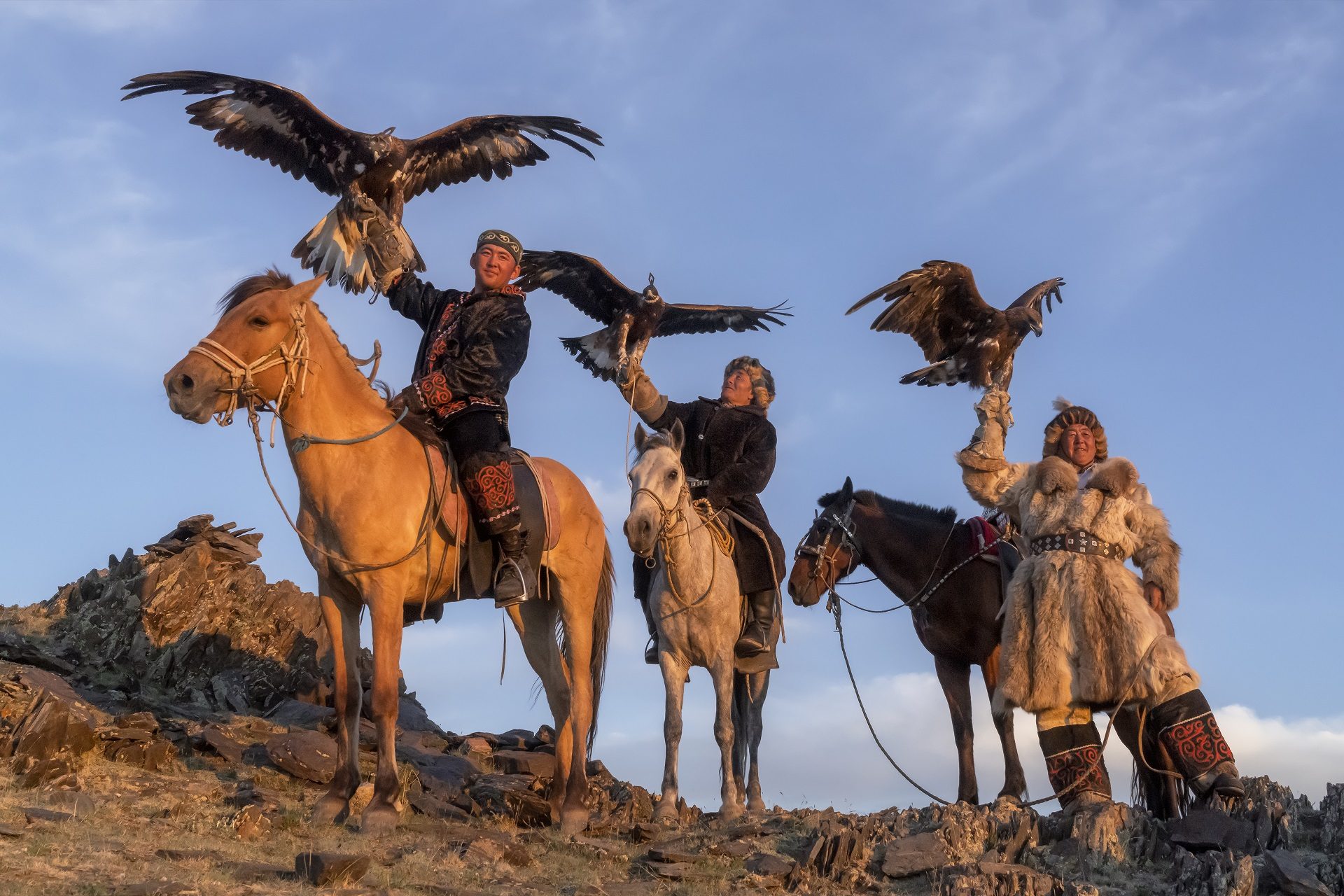
The skill of training golden eagles is passed on through generations, from father to son at a young age and this considered a great pride. Shaimurat has been practicing hunting with eagle for 21 years, and the skills were taught by his father. In recent years, many younger generations move to city for better education, healthcare, and job opportunity. For those who still lives in traditional lifestyle, the practices of eagle hunting provide an additional income from tourism. Shaimurat has 6 children: 2 sons and 4 daughters. 2 of them are working in Ulanbaater, 2 of them are working in Bayan-Ulgii, and 2 of them are herders. As for Shaimurat, he enjoyed living in the countryside, training his eagles, riding his horses, and enjoying his favorite horse’s milk, the lifestyle that bring the feeling of freedom.
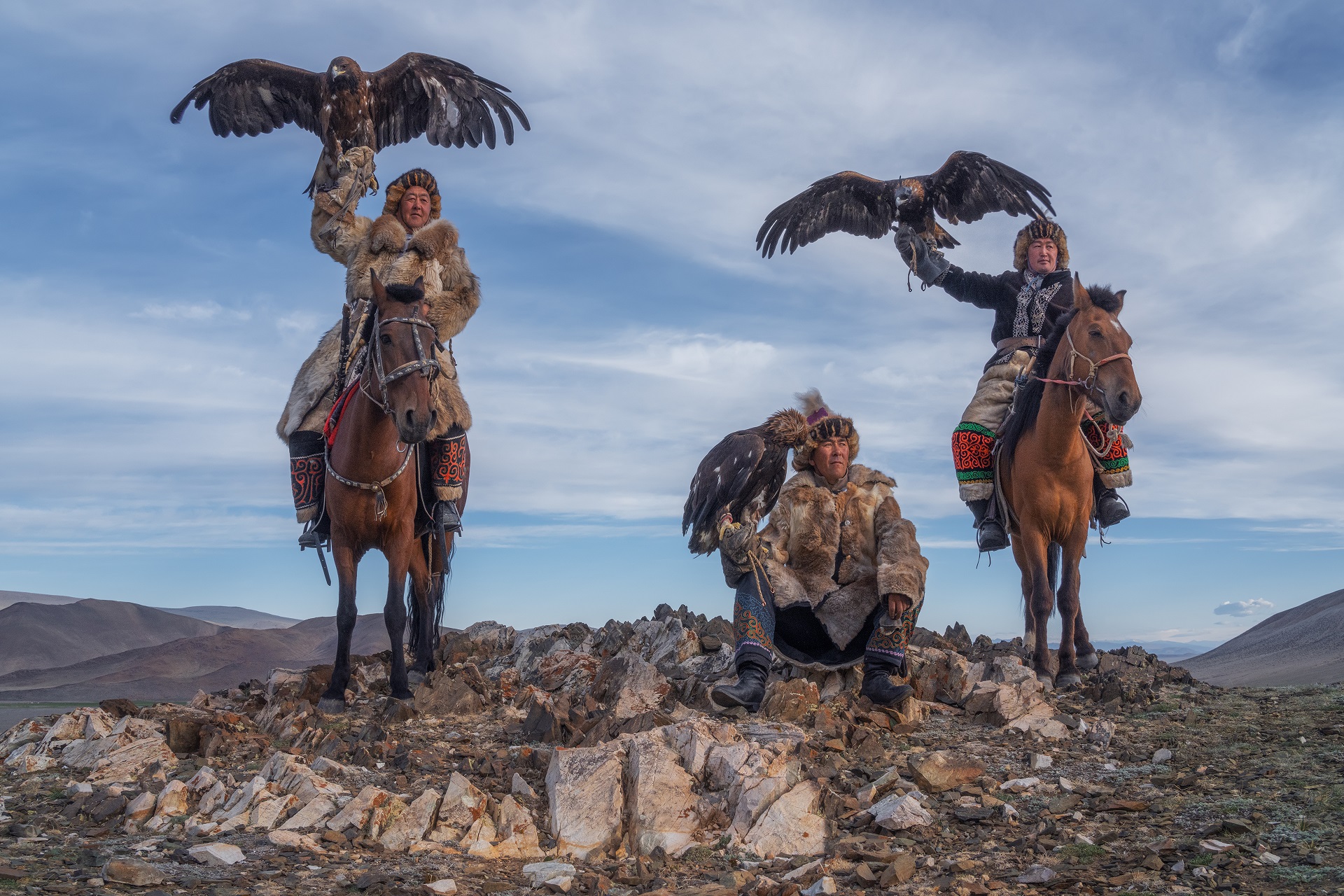

Shaimurat owns 6 gold eagles in the past 21 years: 4 in the past, and 2 in present time. They are 3 and 5 years old. He kept them for 10 to 15 years. He has been taking care of the eagles like his own kids, as he said, he always talks with them. He hunts about 15 foxes per year in the winter, and use the fur to make hat or sell it. He also hunts marmot in the winter and rabbit in the summer. He hunted 3 wolves in the past. He said it is not easy to hunt wolves because of the size, usually it is the effort of at least 2 to 3 eagles!
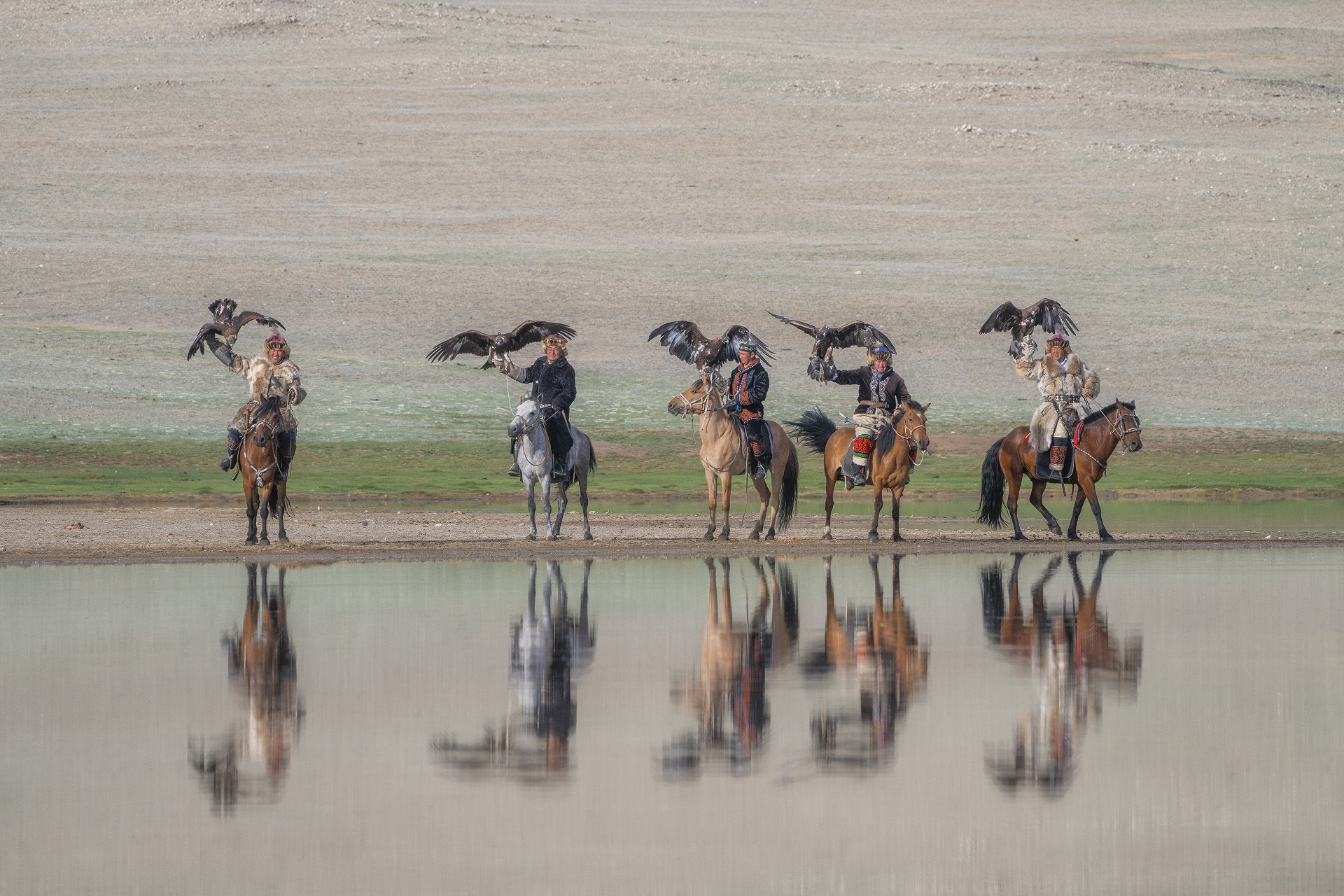

Eagles are sensitive to sounds, sudden movements and changes in light, therefore they are blindfolded by hoods, also known as blinder, to make them feel safe and calm. The hoods were removed during feeding and hunting. Without the hood, the eagle might get excited and take off before the hunter is ready.
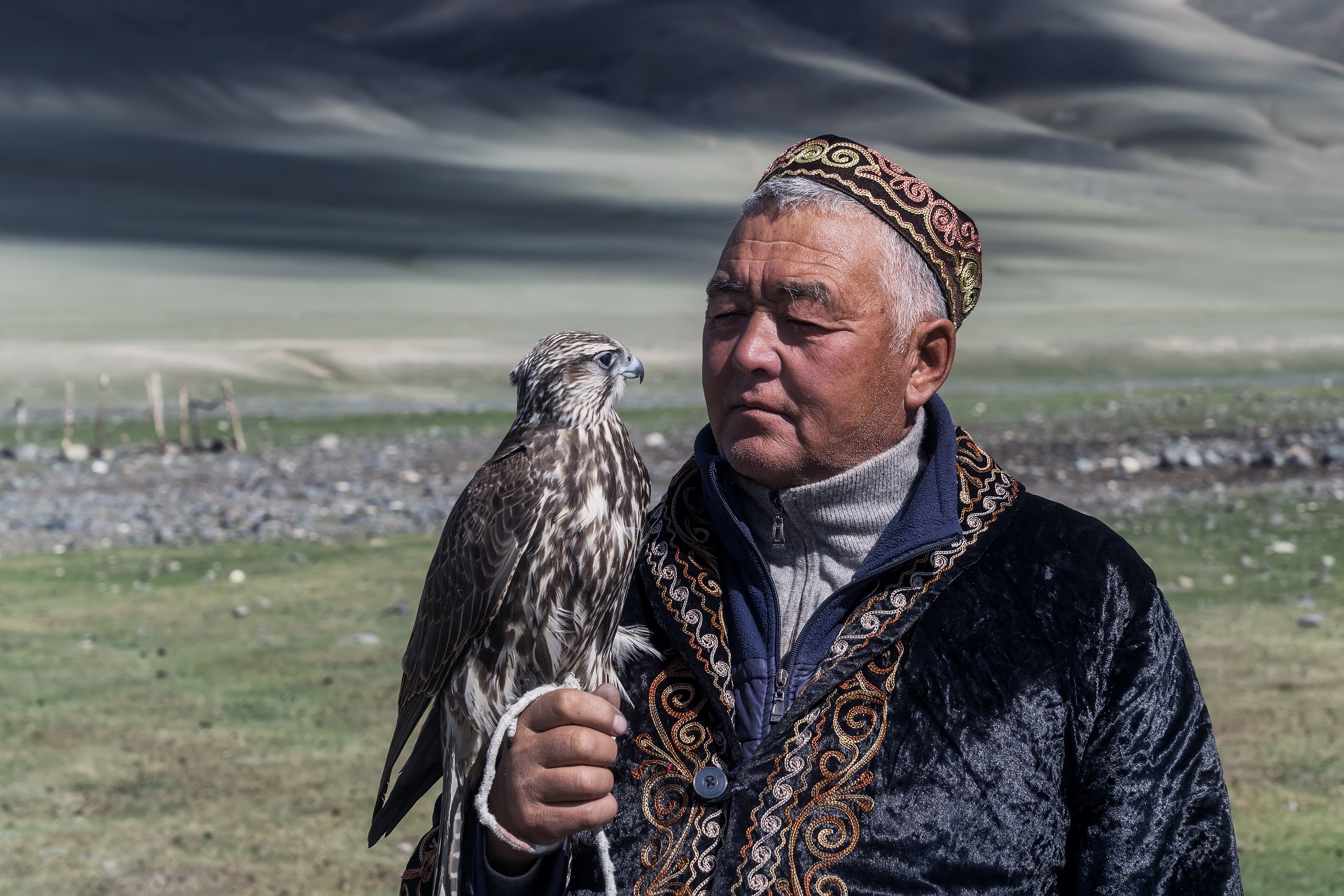
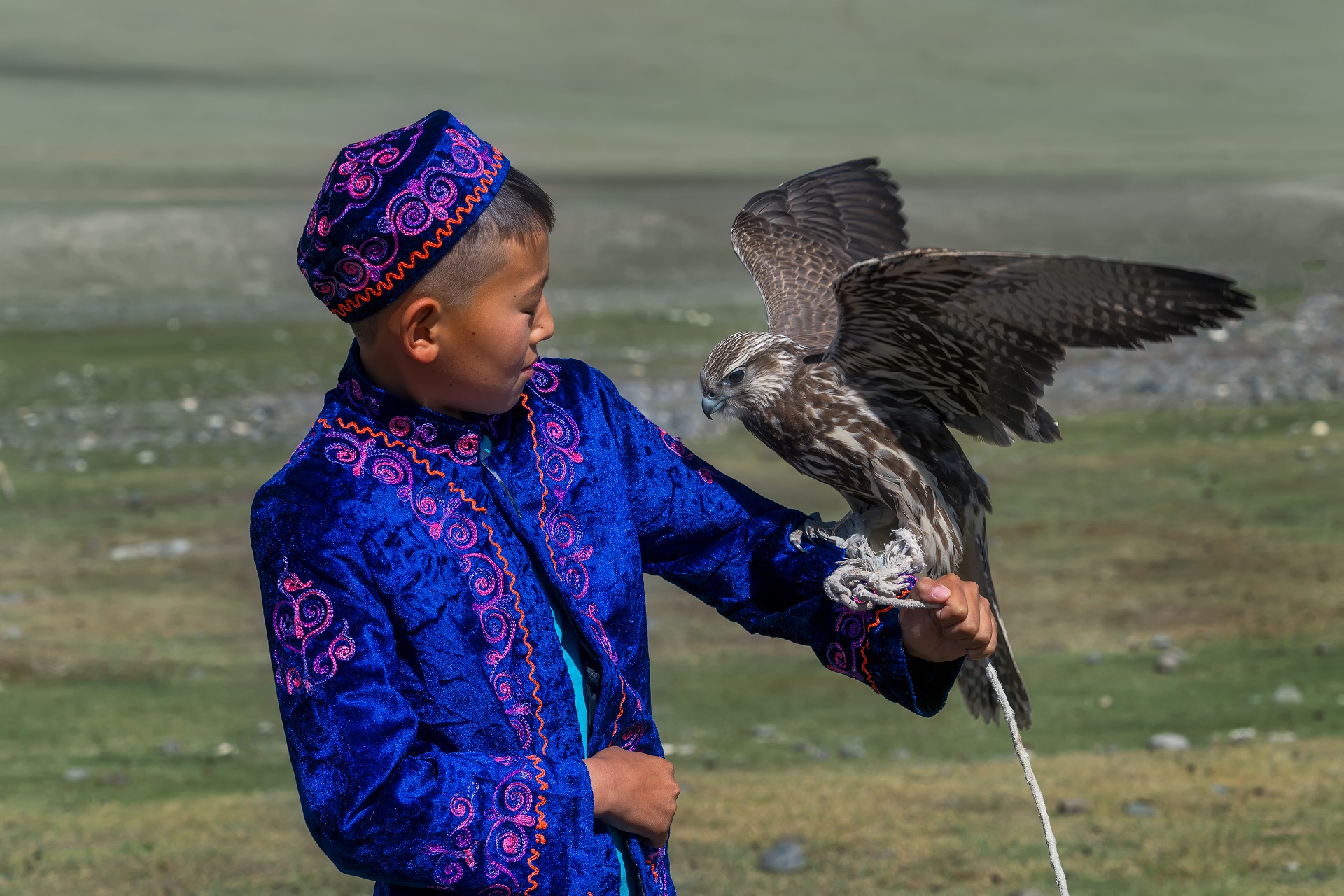
The hunting with eagles is primarily for fur, not for meat. This fur is an integral part of traditional Kazakh clothing. Various animals are hunted for their fur, including rabbits, hares, marmots, red and Corsac foxes, wild cats and wolves. Traditionally, eagle hunters wear black coats or wolf fur coats, boots, and fox fur hats called “loovuuz”. According to Shaimurat, his traditional wolf fur coat was made of 5 wolves, and 3 of them were hunted with his golden eagle.
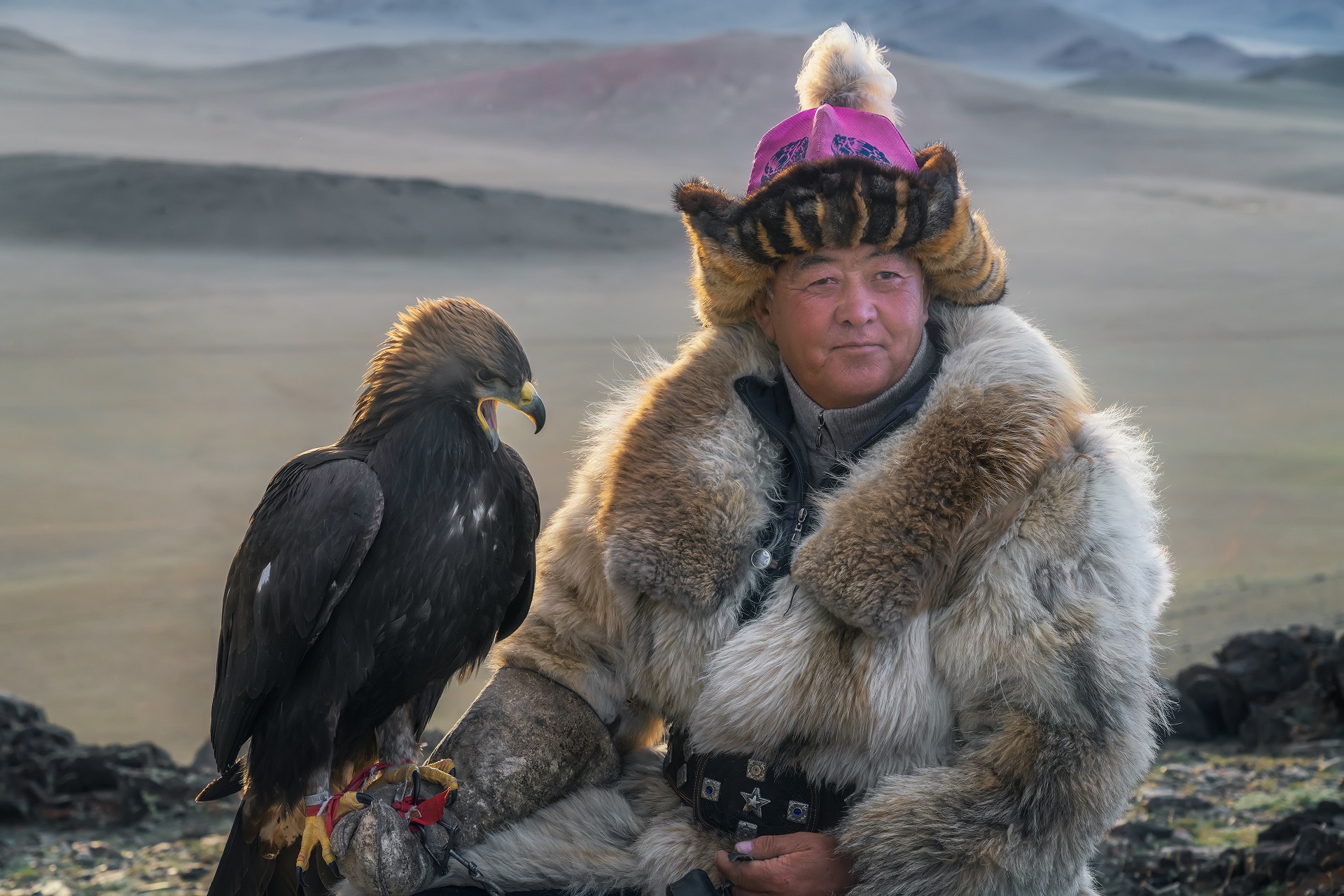
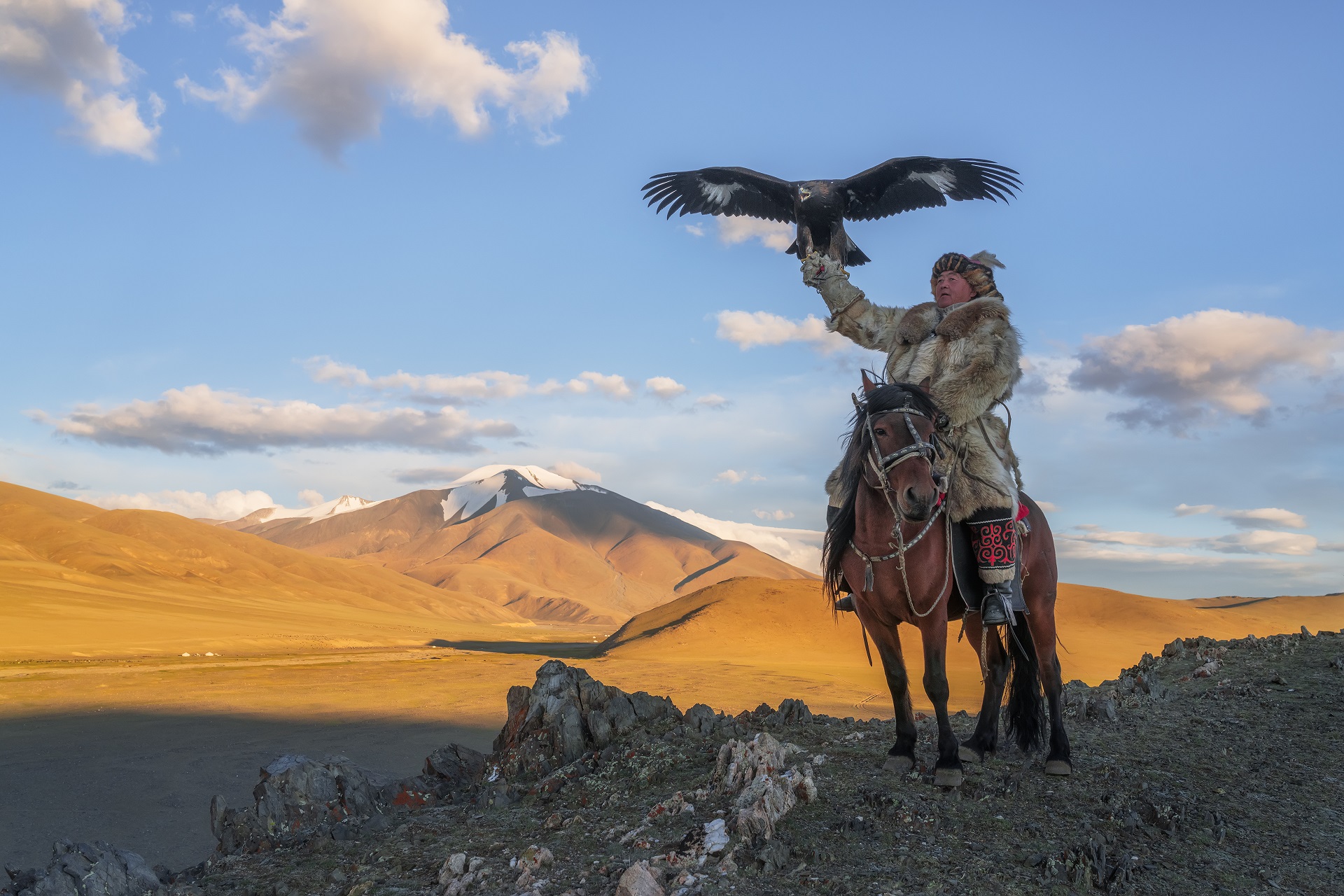
Shaimurat is one of the most skillful and experienced “Berkutchi” or competitive eagle hunters, and he won multiple awards throughout his life. He won multiple gold medals in the eagle hunter festival in various places: 4 in Bayan-Ulgii, 2 in Ulanbaatar, and 1 in Khos-Agash, Russia. He also won many medals in horse racing. The horses also play a central role in the daily life of Kazakhs, and it is traditionally said that “a Kazakh without a horse is like a bird without wings”.
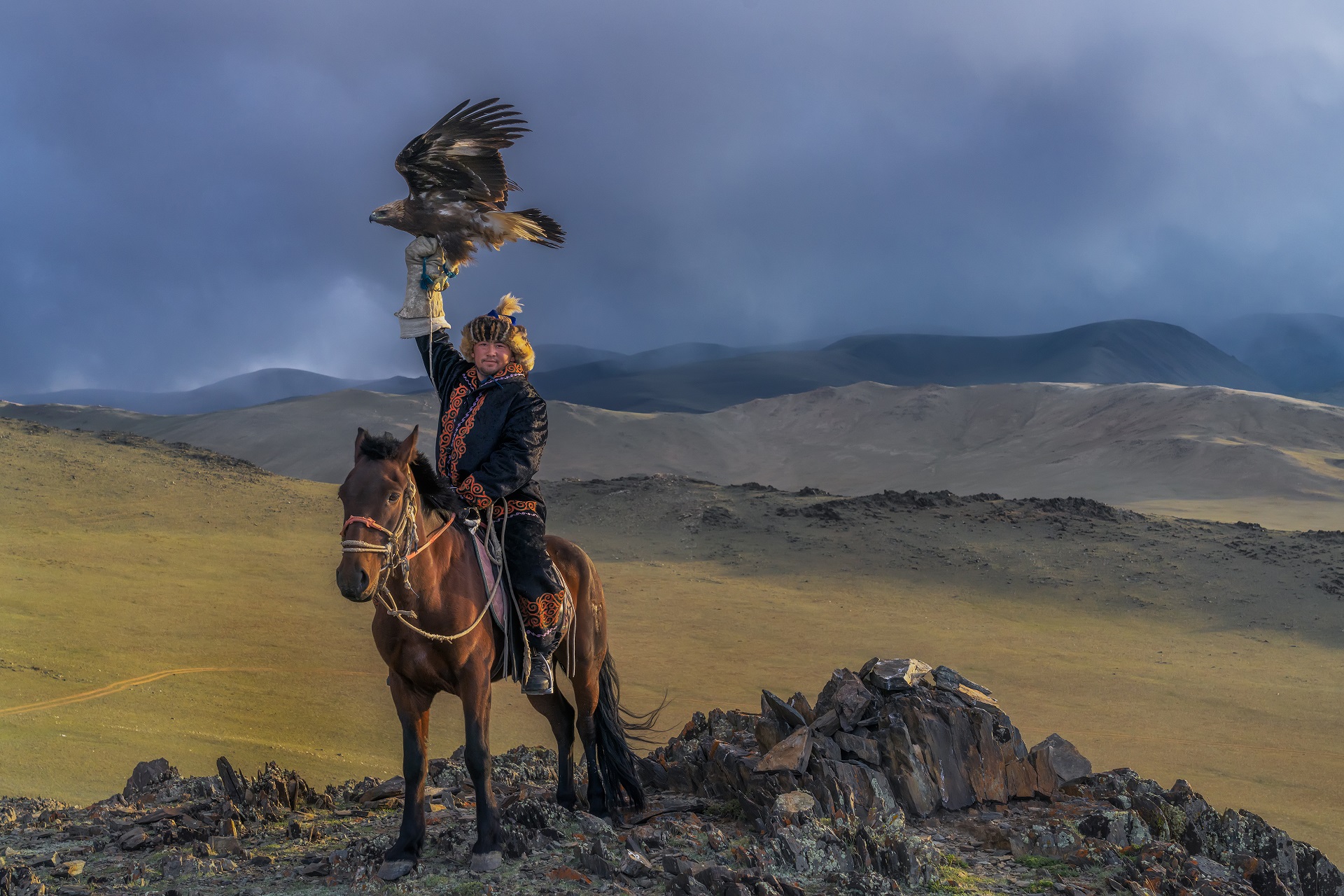
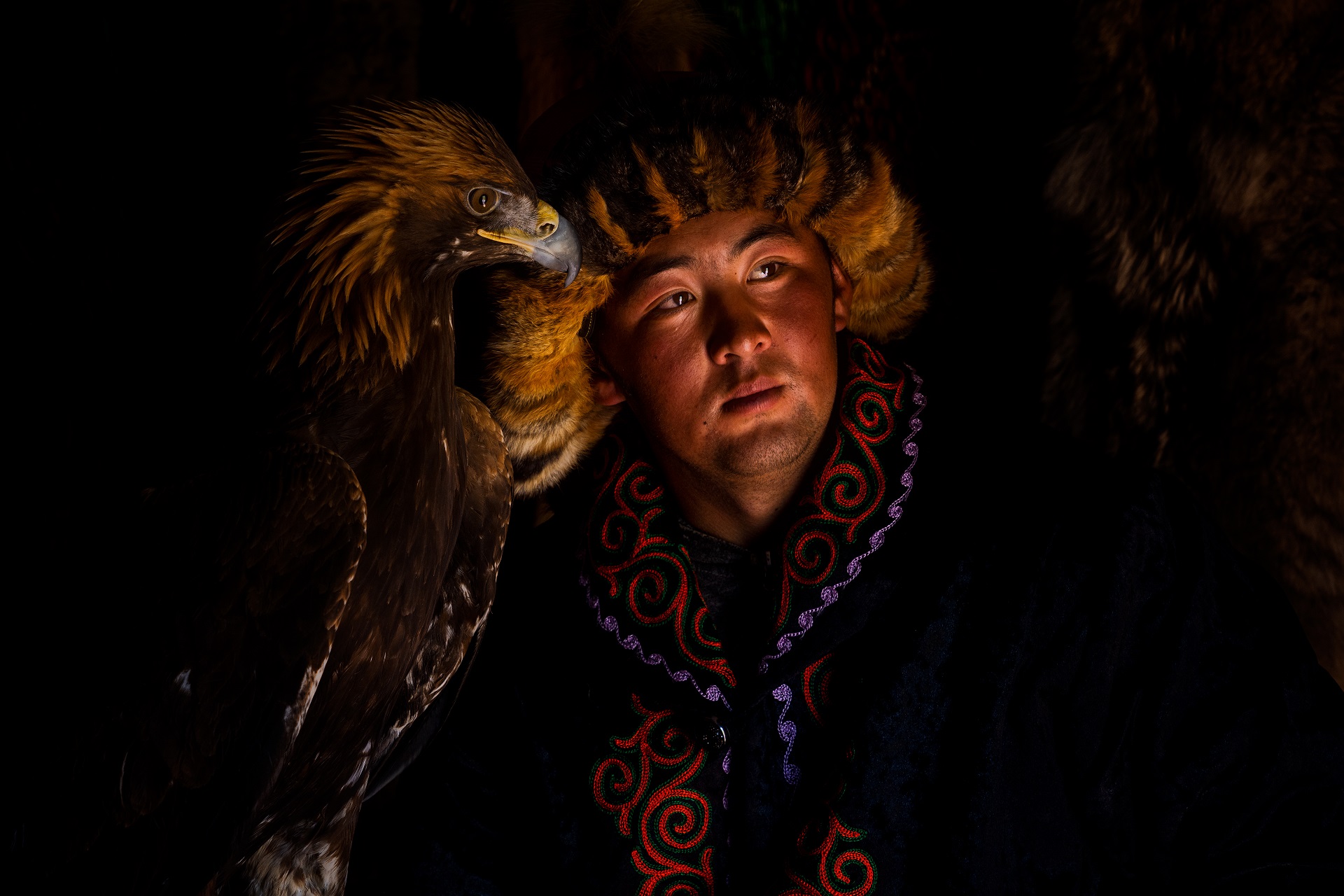
Serikjan Shaimurat (Seka), 21 years old, the youngest son of Shaimurat. He graduated from high school and decided to be the herder. He has been practicing eagle hunting since he was 13 years old. He has two eagles in the past decade. The first eagle was captured by his father and later releases. The second eagle was obtained from his relative, and she is 3 years old now. Seka hunted about 13 foxes and 7 rabbits. Seka has been participating golden eagle festival since 2015. According to Seka, he loves to train eagle and he wants to be a champion eagle hunter like his father.
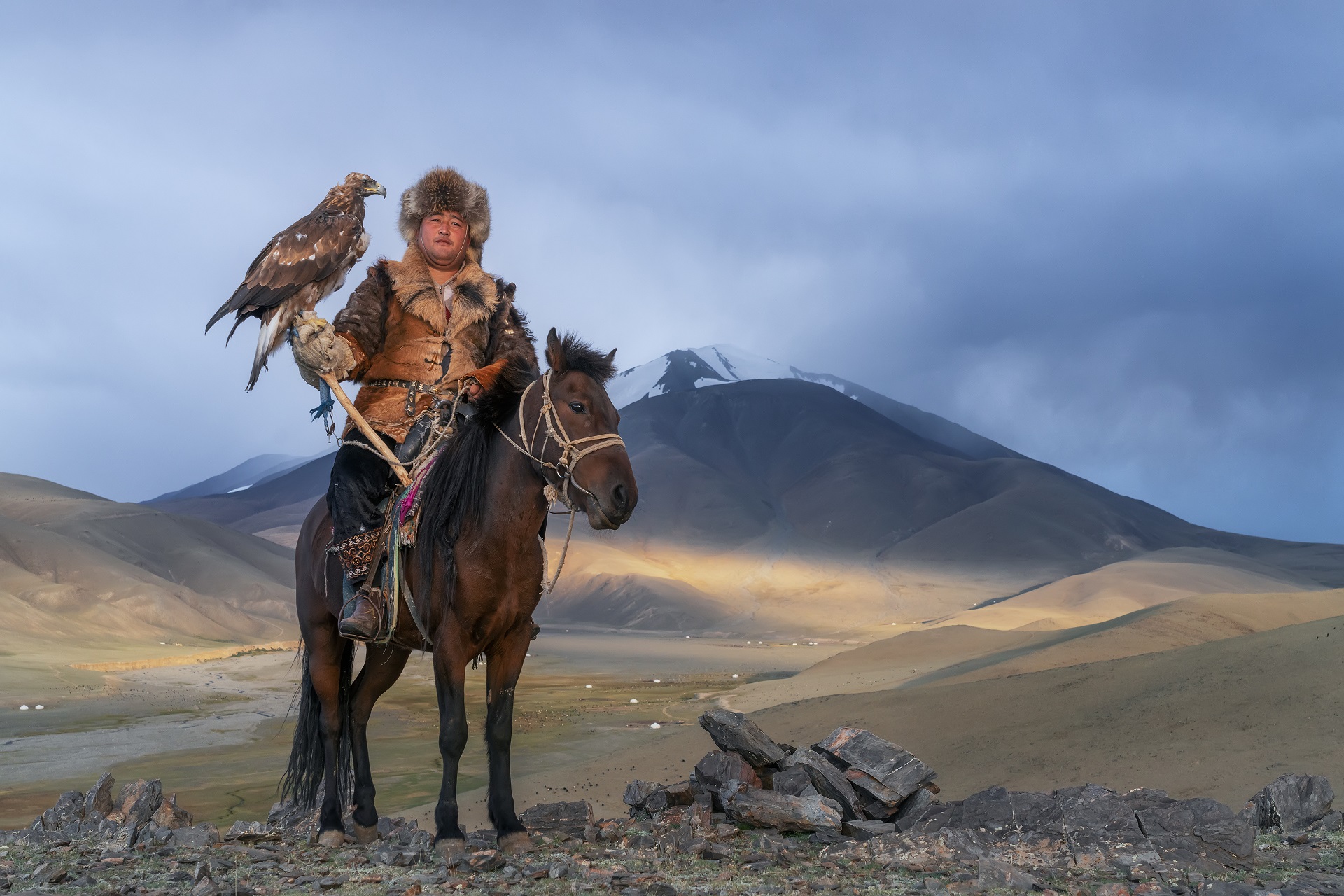
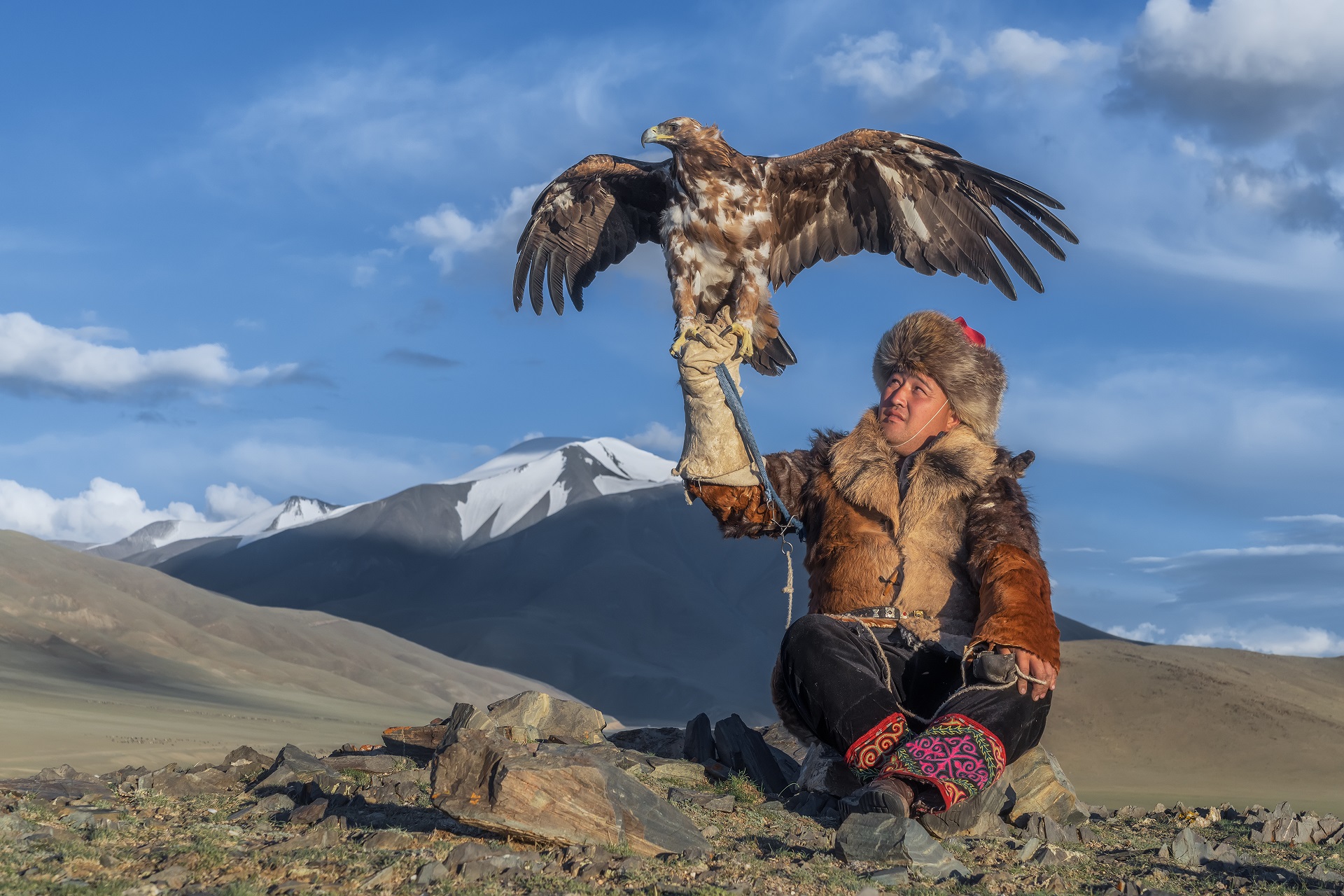
Daulet Amantai (Daklay), 31 years old, father of two daughters (3 and 2 years old), and son-in-law of Shaimurat. Daklay has been apprenticed by Shaimurat for 3 years. He has an eagle of 5 years old. He works as an accountant in Altantsugts. During the summer break, he stays in the Ger camp with Shaimurat family and help Shaimurat to entertain tourists. According to Daklay, he enjoys being an eagle hunter, and he would like to compete in the golden eagle festival next year.

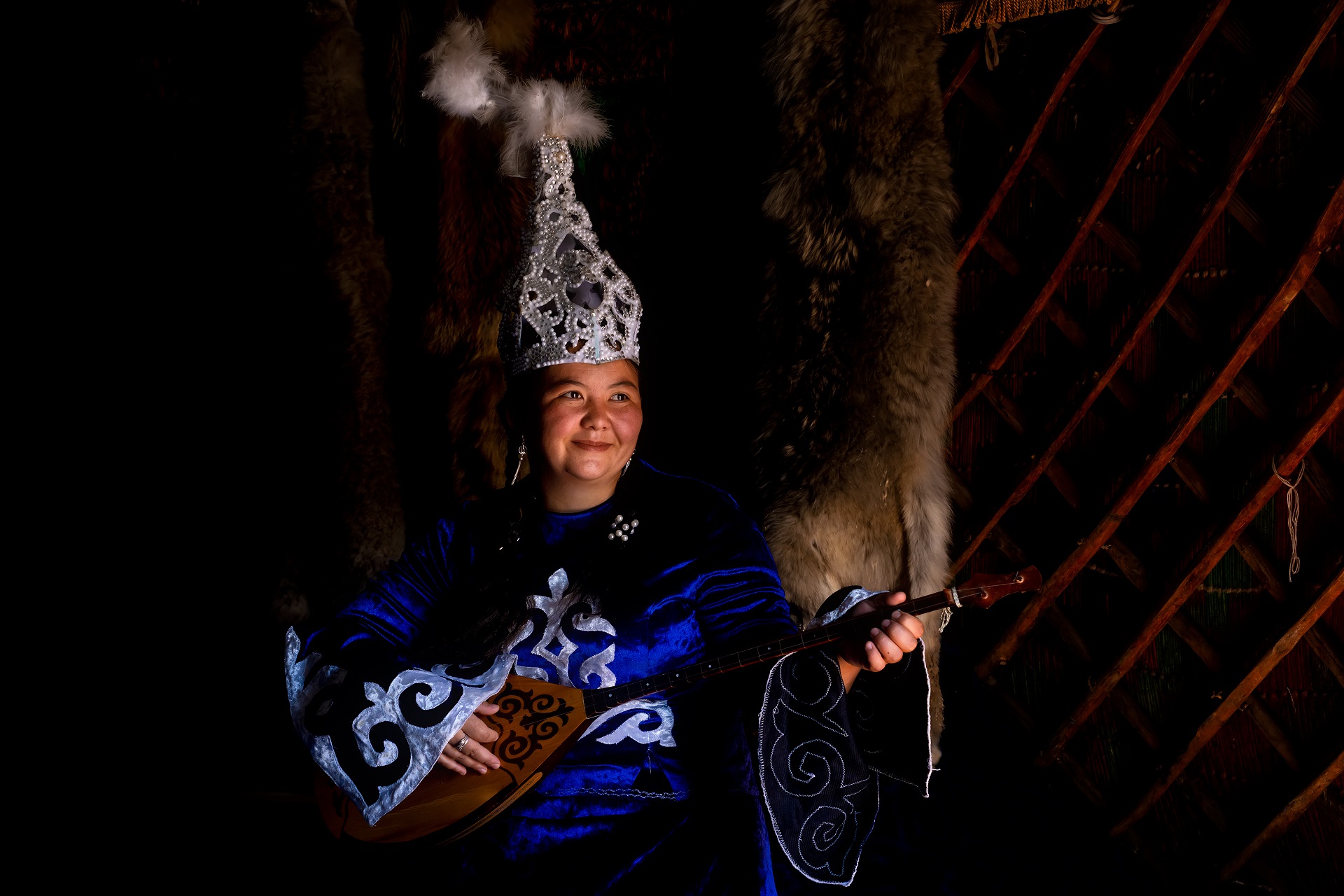
Other than eagle hunting and horse racing, Shaimurat is a skillful dombra player, which he inherited from his father since he was 8 years old. We enjoyed the incredible private dombra “concert” by Shaimurat. This beautiful music has been replayed in my mind for days – perhaps my desire of spiritual freedom rather than materialism, just like a Kazakh! Although we have to communicate with each other via our local guide/translator, Shaimurat’s hospitality is second to none. Shaimurat, his family members and his friends are the friendliest and nicest peoples I’ve ever met!
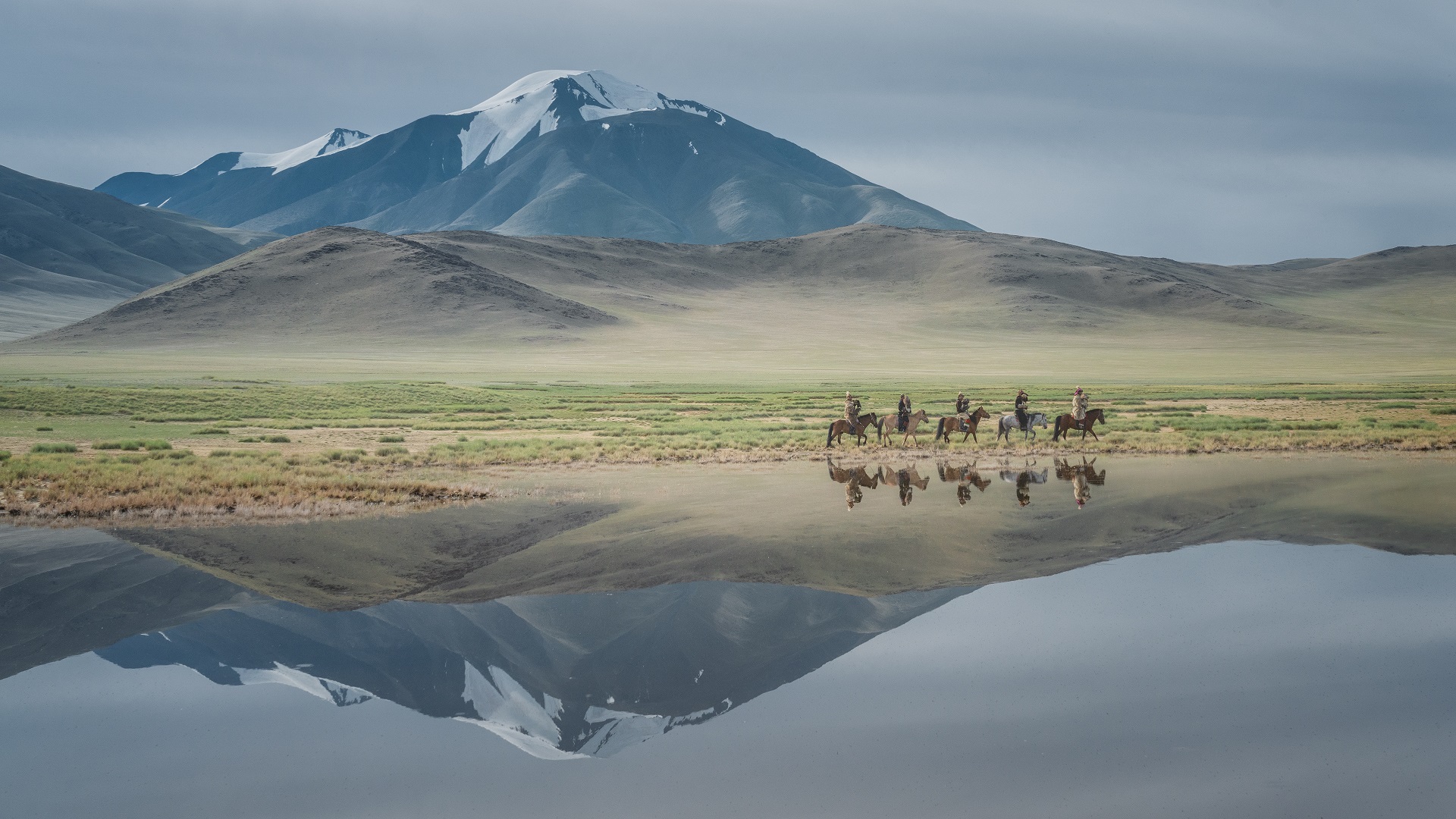
Every mid-October since 2000, Golden Eagle Festival has been a major tourism attraction in Western Mongolia. This event aims to promote their unique heritage to their next generation and to the world. In 2011, UNESCO added Kazakh eagle hunting to the List of the Intangible Cultural Heritage of Humanity, as an example of living human heritage. As an eagle hunter told National Geographic, “When Kazakhs came into the world, they were eagle hunters.”
Join us for the next adventure to Mongolia. For more information, please visit: https://kahwailin.com/mongolia-2023a/

